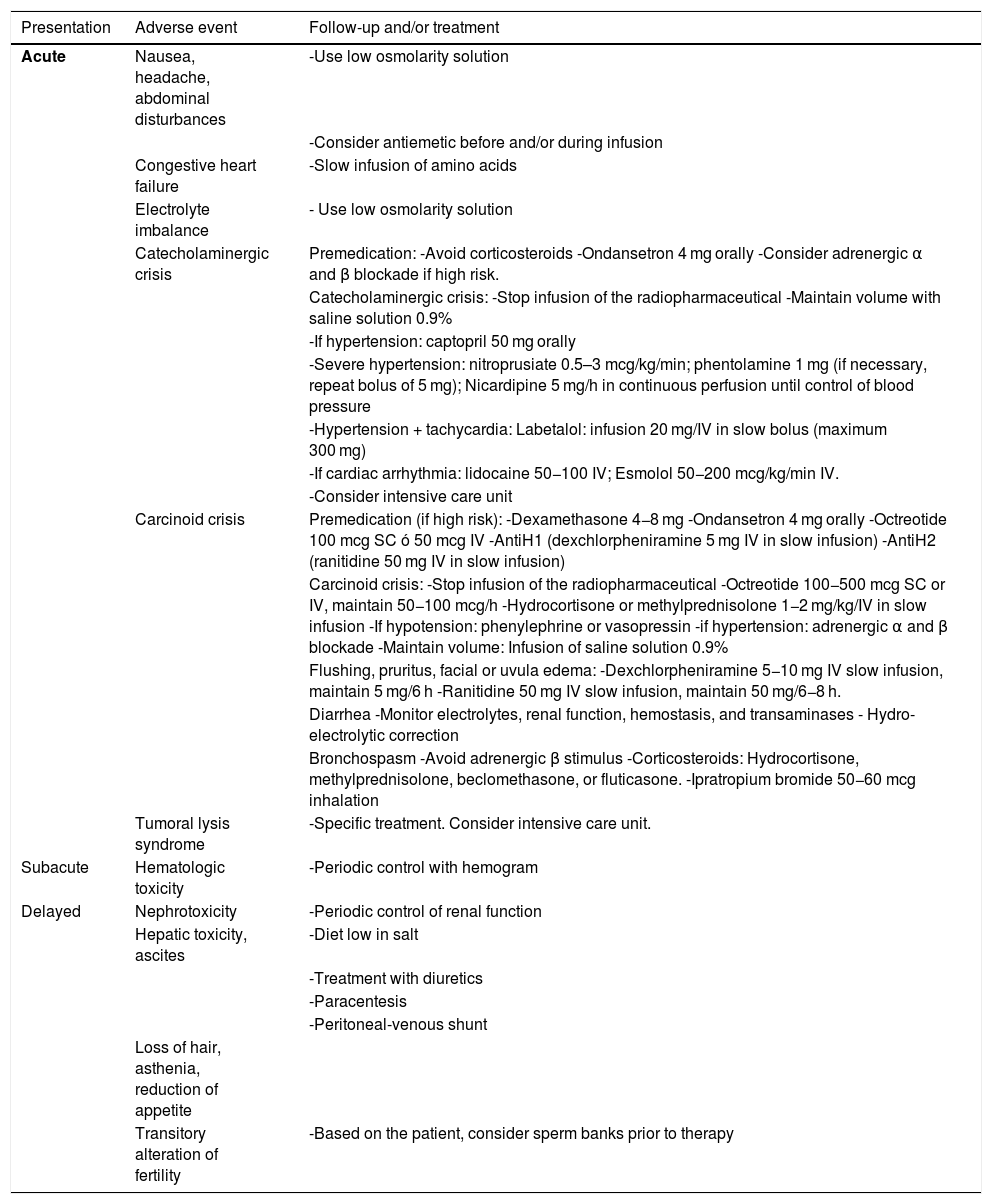This continuing education aims to present in a clear and easy-to-understand way, the biology of neuroendocrine tumors (NETs), the characteristics of somatostatin receptors, the selection of patients for radiolabelled peptide therapy (PRRT), the inclusion criteria to benefit from treatment with the minimum possible adverse effects, the administration protocol, follow-up and response evaluation. The functional imaging studies necessary to explore the biology of the tumor and to individualize the treatment are also carried out, and constitute the cornerstone for the development of teragnosis.
Clinical trials are being developed to better define the position of PRRT within the broad therapeutic options, and among the future perspectives, there are several lines of research to improve the objective response rate and survival with PRRT, focused on the development of new agonists and somatostatin receptor antagonists, new radionuclides and radiosensitizing combination therapies.
In conclusion, PRRT is a great therapeutic, well-tolerated and safe tool with generally mild and self-limited acute side effects, that must be sequenced at the best moment of the evolution of the disease of patients with NET. Candidate patients for PRRT should always be evaluated by a multidisciplinary clinical committee.
Esta formación pretende presentar de forma clara y de fácil comprensión, la biología de los tumores neuroendocrinos (TNE), las características de los receptores de somatostatina, cómo debe realizarse la selección de pacientes candidatos a terapia con péptidos radiomarcados (PRRT), si el paciente cumple los criterios para beneficiarse del tratamiento, con los mínimos efectos adversos posibles, el protocolo de administración, seguimiento y evaluación de respuesta. También se desarrollan los estudios de imagen funcional necesarios para explorar la biología del tumor e individualizar el tratamiento, que constituyen la piedra angular para el desarrollo de la teragnosis.
Se están desarrollando ensayos clínicos para definir mejor la posición de PRRT dentro del amplio panorama terapéutico, y entre las perspectivas de futuro hay varias líneas de investigación para mejorar la tasa de respuesta objetiva y la supervivencia con PRRT, centradas en el desarrollo de nuevos agonistas y antagonistas del receptor de somatostatina, nuevos radionúclidos y terapias combinadas radiosensibilizantes.
En conclusión la PRRT es un tratamiento bien tolerado, seguro y con efectos secundarios agudos, generalmente leves y autolimitados, que constituye una gran herramienta terapéutica que debe secuenciarse en el mejor momento de la evolución de la enfermedad de los pacientes con TNE. Los pacientes candidatos a la PRRT deben ser valorados siempre por un comité clínico multidisciplinar.
Artículo

Revista Española de Medicina Nuclear e Imagen Molecular (English Edition)
Comprando el artículo el PDF del mismo podrá ser descargado
Precio 19,34 €
Comprar ahora












